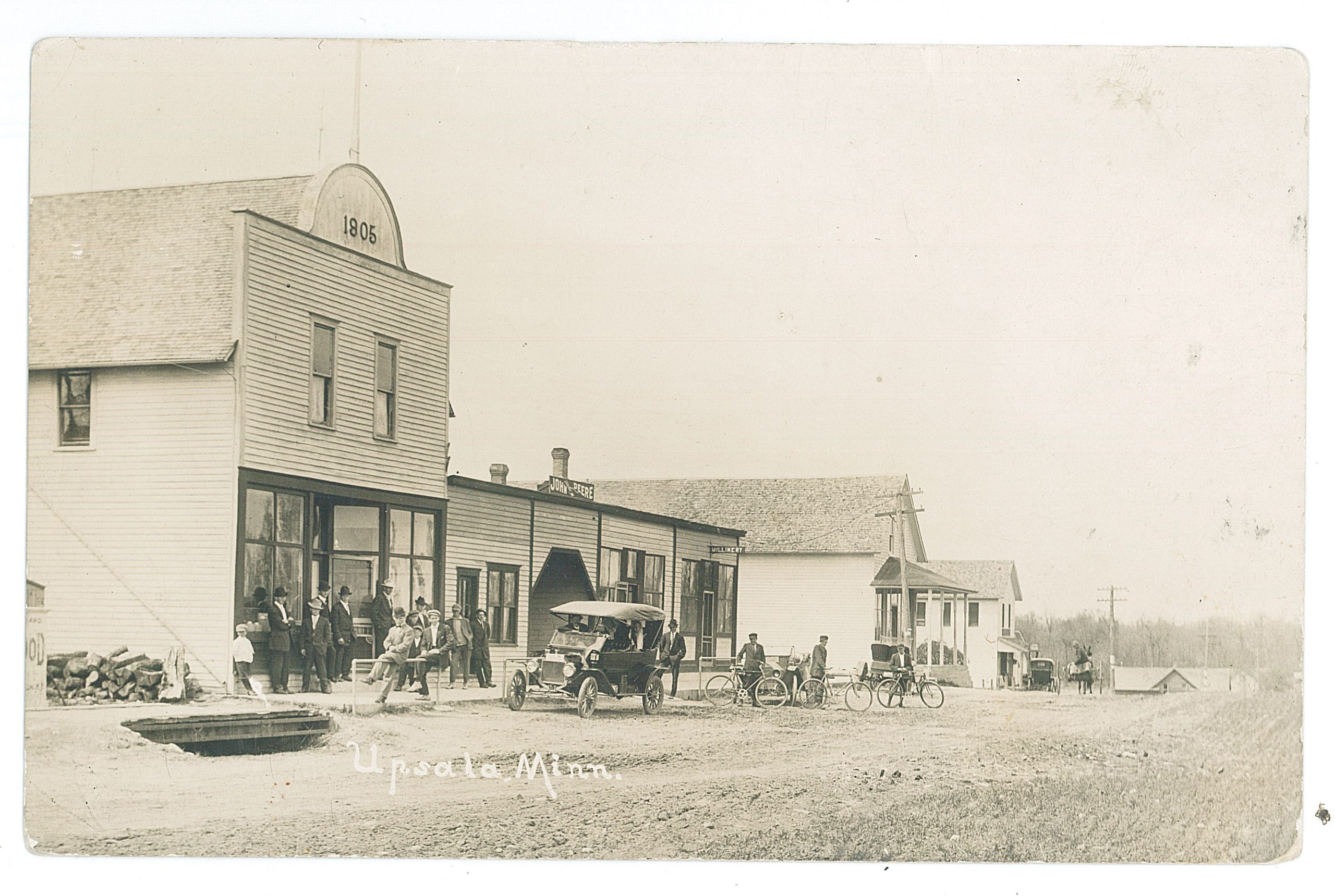My interest in Upsala, Minnesota, began in 1981 when I met 90-year-old Ida Ryberg, whose parents, Johan and Anna Mari Ryberg, emigrated to Morrison County in 1890.
Settling in Elmdale Township, the family, including three-month-old Ida, lived in a log house that had a bark and sod-covered roof. The logs had been cut so hurriedly that leaves sprouted in the warm, airtight room, Ida said.
Upsala, population 400, still retains a large part of its pioneer past along Main Street, where a wooden, two-story false-front building, erected in 1906, still stands along side other early structures.
The area surrounding Upsala was settled by Swedish–and a scattering of Danish–immigrants who formed part of the mass immigration of Swedes to the United States that, between 1880 and 1894, numbered 475,000.
In Morrison County the number of Swedish settlers in 1895 totaled 1,457. Census records show that during the same period the county had 769 people from Poland and 1,773 from Germany.
Founded in 1872, Upsala was originally named Swedback’s Settlement, named after Charles and Erica Swedback, builders of the area’s first creamery, sawmill, and general store.
Settled predominantly by Swedish Protestant immigrants, the struggling village was renamed in 1888 for the postmaster’s hometown, Uppsala, site of a famous Swedish university. The second “p” in the town’s name was later dropped.
Hoping to provide a market for crops, the Northern Pacific Railroad sold land around Upsala to newcomers beginning in 1880. In 1872, Swedish immigrant John Henry Peterson walked from St. Cloud to Upsala, where he built a log cabin for his family on a 160-acre site.
August Johnson, another early settler, held the first clear title to the land upon which the village would stand.
By 1915, the town could boast a bank, a creamery, a telephone company, lumber and furniture dealers, dry goods stores, a meat market, and an implement and harness shop.
During the 1920s, the town gained a movie theater, a drug store, a billiard hall, and a medical doctor. In 1913, Johnson sold 60 acres to John S. Borgstrom, a photographer, who had arrived in Upsala in 1893 with his wife, Anna, and their five-year-old son, Axel.
An ambitious entrepreneur, Borgstrom opened photography studios in Upsala, Swanville, Burtrum, Grey Eagle, Holdingford, and Elmdale. In 1914, he helped organize the Farmers State Bank, hiding the safe under a horse blanket in a cornfield while the building was being erected. In 1931, a robber wounded a cashier while escaping with $3,500 in gold that was never recovered.
During his long career, Borgstrom also established a confectionary shop, a hardware store, and an undertaking parlor.
For three-quarters of a century, Axel Borgstrom was Upsala’s best-known citizen. In 1914, he entered his father’s bank as a cashier and rose to become its president. Axel retired at 88, and died in 1995 at 106.
The early postcard view of Upsala’s Main Street shows that the street has hardly changed today.
– Bill Morgan
Historian & Guest Writer
Bill adapted this story from one he wrote for the St. Cloud Times, July 7, 2001. The above version appeared in the Morrison County Historical Society’s newsletter, Vol. 33, No. 3, 2020.

Handwritten on the back several businesses are identified, a building built by Upsala Hall Construction Association in 1905 that was purchased by J.S. Borgstrom in 1909, Alfred Pehrson’s groceries, Swedback’s General Store, and a blacksmith shop that burned down later.
Donated to MCHS collections by Bill Morgan.

